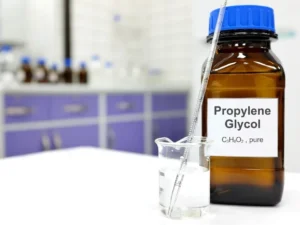Description
1-Octanol: A Versatile Alcohol with Applications Spanning Industries
1-Octanol, also known as octyl alcohol or capryl alcohol, is a fatty alcohol with the chemical formula CH3(CH2)7OH. It’s a colorless, oily liquid with a characteristic sweet, floral-like odor. This unassuming molecule plays a surprising role in various industries, thanks to its unique properties and versatility.
Properties and Characteristics:
1-Octanol is an eight-carbon, straight-chain alcohol. Its moderate solubility in water and good solubility in organic solvents contribute to its versatility. Key characteristics include:
- Boiling Point: Approximately 195°C (383°F)
- Melting Point: Approximately -15°C (5°F)
- Density: Approximately 0.83 g/cm³
- Partition Coefficient (Log P): A significant factor, with a Log P value typically around 3.0. This means it’s significantly more soluble in octanol (a non-polar solvent) than in water, influencing its behavior in biological systems.
Diverse Applications:
The properties of 1-octanol make it a valuable ingredient in a wide range of applications:
- Fragrance and Flavor Industry: 1-Octanol provides a sweet, floral note to perfumes, fragrances, and flavorings. It contributes to the overall scent profile in floral and citrus-based fragrances and can be used to enhance the fruity or citrusy notes in food flavorings.
- Cosmetics: 1-Octanol acts as an emollient and solvent in cosmetic formulations. It helps soften and moisturize the skin, providing a smooth texture. Its solvent properties aid in dissolving other ingredients and improving the product’s overall consistency. It’s often found in creams, lotions, and makeup products.
- Pharmaceuticals: In the pharmaceutical industry, 1-octanol is primarily used as a solvent and excipient. It can improve the solubility and bioavailability of certain drugs. Its Log P value also makes it useful in drug design and development, particularly in predicting drug distribution within the body.
- Industrial Applications: 1-Octanol is used as a raw material in the synthesis of various other chemicals, including esters, ethers, and surfactants. These derivatives find applications in detergents, lubricants, and hydraulic fluids.
- Research and Development: 1-Octanol plays a crucial role in scientific research, particularly in electrochemistry and partition coefficient studies. It is often used as a standard reference solvent for determining the lipophilicity (fat-loving property) of other compounds. The octanol-water partition coefficient is a key parameter in understanding how chemicals distribute in biological systems and the environment.
Safety Considerations:
While 1-octanol is generally considered safe for its intended uses, proper handling precautions should be observed. It can be irritating to the skin and eyes, and prolonged exposure to high concentrations of vapors may cause dizziness or nausea. Safety Data Sheets (SDS) provide detailed information on handling, storage, and potential hazards.
Environmental Considerations:
Like any chemical, the environmental impact of 1-octanol production and use is a concern. 1-Octanol is biodegradable, meaning it can be broken down by microorganisms in the environment. However, its release into aquatic ecosystems should be minimized to prevent any potential harm to aquatic life.
Conclusion:
1-Octanol is a versatile chemical compound with a wide array of applications across various industries. From adding a subtle floral note to fragrances to acting as a crucial solvent in pharmaceutical formulations, its properties make it an invaluable ingredient. Understanding its properties, applications, and safety considerations is essential for its responsible use and continued contribution to diverse sectors. As research continues, we can expect to see even more innovative applications for this fascinating compound.













Reviews
There are no reviews yet.